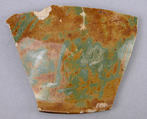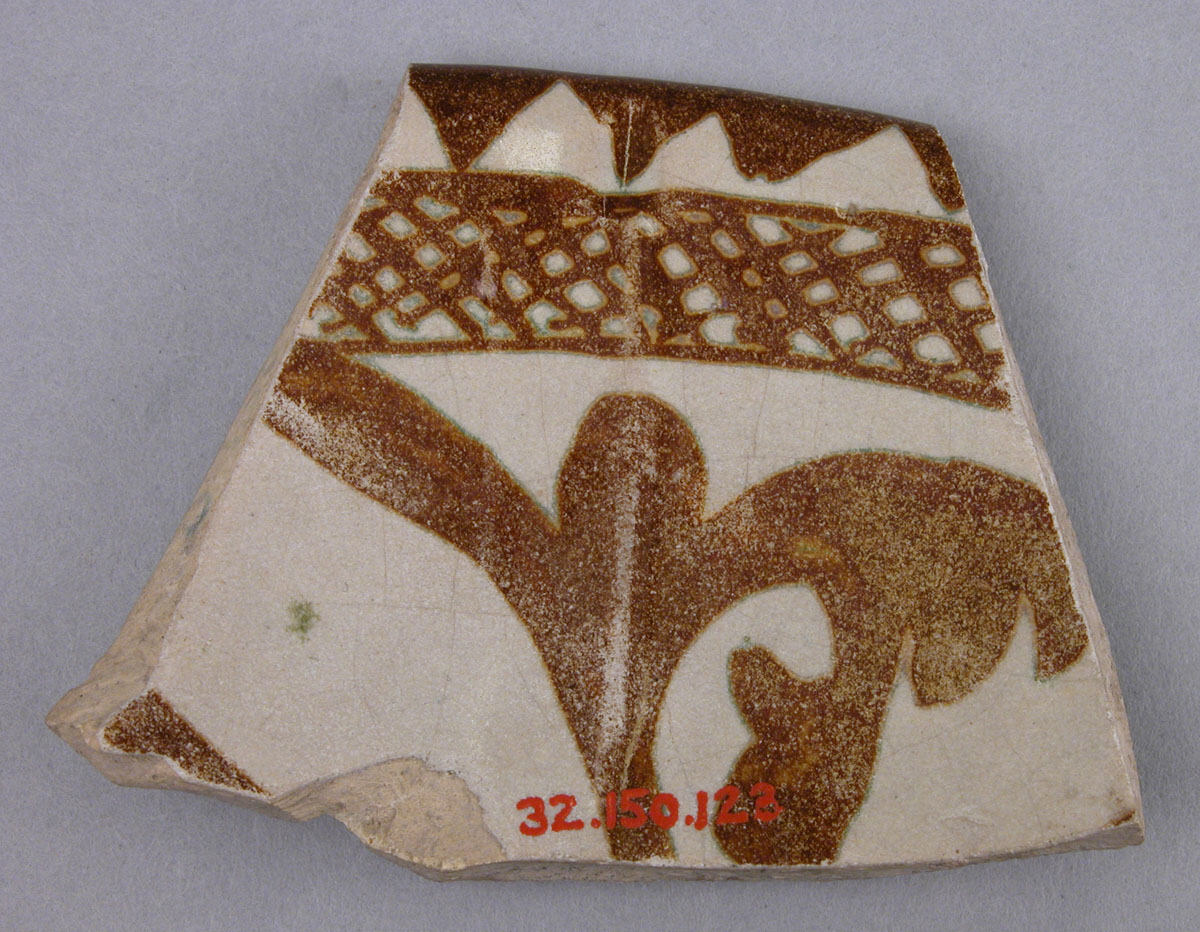Fragment of a Lotus-Shaped Bowl with Luster and Green-Mottled Decoration
Not on view
This ceramic fragment was excavated in Ctesiphon, the Sasanian metropolis and administrative capital conquered by Arab Muslim armies in 637. The city was known in Arabic as al-Mada’in, or "the cities", for its extended area. Arab historians indulge in describing al-Mada’in/Ctesiphon’s grand monuments, which obsessed Muslim rulers and may have acquired a symbolic meaning related to its imperial past. This was the case of the Taq-i Kisra, an impressively-sized ivan (a vaulted hall with one side open) partially dismantled to reuse its bricks in caliphal buildings in the new capital Baghdad.
Finds like this fragment, which was excavated at a site called West Mound, where the bath of the Taq-i Kisra Palace was believed to be located, attest to the continued occupation of Ctesiphon’s urban area in the early Islamic period. Luster was an innovative technology developed by Iraqi-based craftsmen in the 9th century, as was this kind of opacified glaze. In this fertile artistic period, bowls were often realized in a mold thrown on a wheel, as in this case in which a fine ridge recalls Chinese lobed bowls. While luster fragments are found throughout the Middle East, and along the western and eastern shores of the Indian Ocean, a similar combination of luster with green-brown decoration is rarely found.
The lotus-like ridge on this fragment’s interior is inspired by the shapes of Chinese porcelain bowls, while the mottled luster-and-green exterior may have alluded to a colored marble. For the beholders, who understood or imagined such allusions to precious objects and materials, such details may have amplified their experience of wonderment (‘ajab) induced by the ever-changing shimmering effect of the luster paint. Such ceramics, that are distinctive of ninth and tenth century Iraqi production, responded to the desire for both luxurious and wonder-inducing objects, and open a window into the cosmopolitan sophistication of Abbasid material culture.
Due to rights restrictions, this image cannot be enlarged, viewed at full screen, or downloaded.
This artwork is meant to be viewed from right to left. Scroll left to view more.



